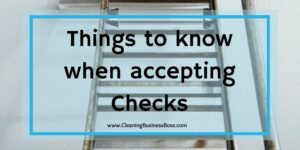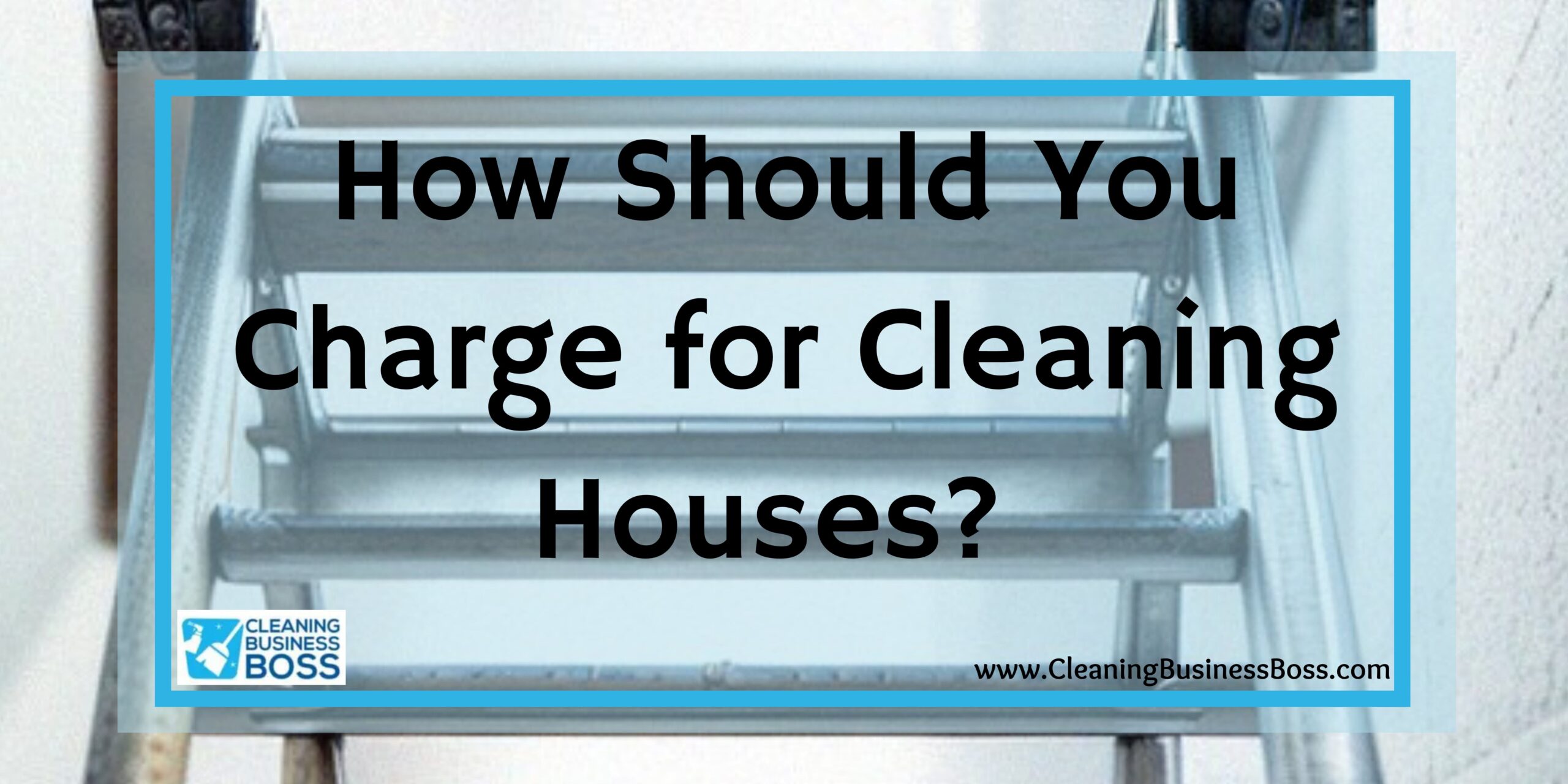Finding out the right costs and payment methods for starting a cleaning business is an important question to ask yourself before deciding to start a cleaning business, even more, important is the answer. You may be starting your own cleaning business, or simply taking the time to read more on the subject. Regardless of your situation, I will be using my own personal experience and knowledge to give you insight into ways to charge and how much to charge.
You can charge your customers using Check, Cash, and digital payments, like Square. The best and safest way to charge for cleaning houses is using a digital payment system.
In this article, we will be determining the pros and cons of each payment format.
Before understanding the ways to charge, we must first discuss:
Methods of Payment
Customers may love your prices and your services, but you haven’t officially made a sale until They answer your question, “How would you like to pay today”? Being an owner of a cleaning business, be prepared to accept payment in any form. When your customer pulls out their wallet, these are the things you’ll want to know:
Things to know when Accepting Cash
Depending on the cost of the transaction with your customer, cash involves more equipment, time, and attention to detail when accounting for it. Cash is a physical payment, therefore, it requires you to physically count it, and be able to provide change for customers choosing to pay with it. If you conduct business in a physical establishment, cash is far more manageable for several reasons.
Being a physical payment, compared to other types of monies, cash being a physical property makes it easier to manage, as you can secure your cash in protected locations. On the other hand cash risks being lost, damaged, or stolen. Ironically, cash is a payment, yet also a liability in this regard.
The process of accepting cash begins with the exchanging of tender. Let’s say: you charge $400 for a carpet cleaning plan with a customer. By creating a plan with a customer, you must charge by the size of each room, as well as materials required for the room being cleaned. For instance, deep cleaning in a five-room home, the prices largest to smallest would be:
- Living Room- $160
- Kitchen- $80
- Main Bedroom $80
- Guest Bedroom $40
- Bathroom $40
If these rooms get cleaned in a single day, the payment process is easy; you perform the service, and the customer pays you cash in full. However, If the customer wants the living room and kitchen cleaned in January, the bathroom cleaned tomorrow, but wants their bedrooms cleaned in late October, cash makes the payment process tedious.
Customers who haven’t built a strong client-business relationship with you are not prone to paying money ahead of time; for services that haven’t been completed. Thus, cash payments are collected per job, whereas other forms of payment allow you to create scheduled payments, creating long-term agreements with your customers, instead of having to ask for money every week like an annoying landlord.
Check out this article to know the cleaning equipment for your cleaning business.
Things to know when accepting Checks

With technological advances happening every day, and online check-out becoming more accessible, paper checks are becoming more obsolete. Typically, checks are more often used by older generations. Despite this, it’s still very important to be aware of the ways checks work, and how to accept them.
Typically, checks get used when customers do not have enough cash on-hand for a payment owed. Customers with checks are referred to as “Check holders”. Checks work through a routing number and a bank account number. When a check holder owes money, they write the owed amount on the check, and money is taken out of their checking or savings account. The person receiving the check goes to a bank; either depositing it into their own account or receiving cash.
Unlike cash, checks are a better solution for businesses building payment plans, as checks can be scheduled. Using the “memo” line on checks, customers get the choice to have different checks deposited or cashed throughout the year. Do keep in mind, checks expire beyond six months. Another drawback is, if customers do not have enough money in their accounts, checks will “bounce”, meaning you do not receive payment. Among these pit-falls are accounting and security issues which I will mention later in this article.
Things to know when Digital Payment
By far the most efficient, secure, and convenient way for your customers to pay, is with digital payment services. Most digital payment systems give their users secure card reading machines and apps for smart devices that make it easy to accept digital payments.
There are different forms of digital payment such as credit, debit, and although rare, other currencies such as bitcoin. Compared to checking, credit payments ensure payment, if customers cannot afford to pay. Registers, like Square, give you immediate knowledge of this. Compared to cash, digital payments are more convenient for your customers. I say convenient because digital transactions link directly to the bank. This eliminates the need for check slips and paperwork that needs to be filled out frequently. By using electronic transactions, your money is received immediately without the hassle of making change for cash or waiting for a check to be approved. In the modern era, you should always accept digital payments.
As a business owner, it’s important to accept payments of all forms. Ultimately, the way a customer decides to pay you is still a form of legal exchange for service, so it is vital; you know how to manage and secure all forms of payment.
The importance of accounting for your money

For purposes of customer service, budgeting, and legalities, it’s necessary for all your business transactions to be accounted for. Reasons to account for money from sales are:
- Tax filing
- Tax-deductible eligibilities
- Customer claims
- Insurance estimates
- Creating income projections
- Employee checks
By creating records of money spent, and received, you act preventatively. This saves you time and money with issues you encounter through the course of your company’s journey.
Physical payments like cash or check must be accounted for using scanned documents, or software such as Microsoft Excel. It’s also important that you make digital, scanned, copies of any checks you receive.
For digital payments, accounting money is far easier; programs, like square, automatically record transactions done with a credit or debit card. However, I still recommend that you create digital copies of these transactions for yourself.
By accounting copies and documents of money received, or any documents for that matter, you make yourself an “accountable company”. Not only does being accountable work in your favor for legal reasons or tax purposes. Accountability shows your customers that you are a reliable company.
Check out this article to know what is a good profit margin for your cleaning business.
Levels of transaction security

Similar to convenience, transaction security changes with the methods of payment used, Cash being the least secure, and digital being the most secure. Security of money is not only the way it’s exchanged between customer and business, but also the way it’s secured after a transaction.
Cash is the least secure form of payment. Commonly counterfeited, it must be taken to a bank, as cash is often targeted by common criminals. Aside from these issues with cash, money that isn’t put into a bank is not insured. As of 1934, any type of money you put into the bank is protected by the federal government. Without money being in the safe of a bank, it is never truly safe, this is the great benefit of digital payments and checks.
With digital payments and checks, transactions are automatically posted in the banks of your choosing. Providing it’s not the weekend, banks typically clear transactions within 24 hours. These payments are more quickly insured than cash, specifically digital payments. As of 2015, all digital payments are required to use security chips. Compared to other forms of payment, credit and debit payments give its users a better sense of safety with their purchases. Along with security chips, transaction services like Square hold onto information. They act as third parties of security before your money reaches the bank.
The choice of accepted payments you decide for your business is entirely up to you. Depending on your revenue and business model, services like Square may be unnecessary, or out of your budget. In cases like these, cash may be the best option for your business. Ultimately, finding the right method to charge your customers will require that you first ask yourself, “what does my company need”?
Frequently Asked Questions
Do services like square charge a fee for digital payments?
Yes. For security, customer convenience, and a professional presentation, you can expect to pay anywhere from 2.6% to 2.9% per transaction with a square.
What is the best way to secure cash?
The best thing you can do is to recommend to customers to pay another way before the job. However, if cash is their preference, it’s important to keep cash in a lockbox.
To learn more on how to start your own cleaning business, check out my startup documents here.
Please note that the contents of this blog are for informational and entertainment purposes only and should not be construed as legal advice. Any action taken based on the information provided in this blog is solely at your own risk. Additionally, all images used in this blog are generated under the CC0 license of Creative Commons, which means they are free to use for any purpose without attribution.

About the author. Entrepreneur and Cleaning Business Fan.
Hi! I am Shawn and I am a happy individual who happens to be an entrepreneur. I have owned several types of businesses in my life from a coffee shop to an import and export business to an online review business plus a few more and now I create online cleaning business resources for those interested in starting new ventures. It’s demanding work but I love it. I do it for those passionate about their business and their goals. That’s why when I meet a cleaning business owner, I see myself. I know how hard the struggle is to retain clients, find good employees and keep the business growing all while trying to stay competitive.
That’s why I created Cleaning Business Boss: I want to help cleaning business owners like you build a thriving business that brings you endless joy and supports your ideal lifestyle.


